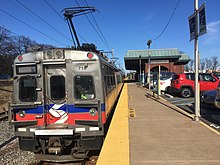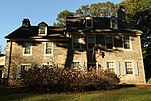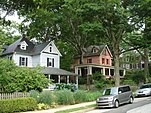Warminster Line
This article needs additional citations for verification. (August 2016) |
| Warminster Line | ||||||||||||||||||||||||||||||||||||||||||||||||||||||||||||||||||||||||||||||||||||||||||||||||||||||||||||||||||||||||||||||||||||||||||||||||||||||||||||||||||||||||||||||||||||||||||||||||||||||||||||||||||||||||||||||||||||||||||||||||||||||||||||||||||||||||||||||||||||||||||||||||||
|---|---|---|---|---|---|---|---|---|---|---|---|---|---|---|---|---|---|---|---|---|---|---|---|---|---|---|---|---|---|---|---|---|---|---|---|---|---|---|---|---|---|---|---|---|---|---|---|---|---|---|---|---|---|---|---|---|---|---|---|---|---|---|---|---|---|---|---|---|---|---|---|---|---|---|---|---|---|---|---|---|---|---|---|---|---|---|---|---|---|---|---|---|---|---|---|---|---|---|---|---|---|---|---|---|---|---|---|---|---|---|---|---|---|---|---|---|---|---|---|---|---|---|---|---|---|---|---|---|---|---|---|---|---|---|---|---|---|---|---|---|---|---|---|---|---|---|---|---|---|---|---|---|---|---|---|---|---|---|---|---|---|---|---|---|---|---|---|---|---|---|---|---|---|---|---|---|---|---|---|---|---|---|---|---|---|---|---|---|---|---|---|---|---|---|---|---|---|---|---|---|---|---|---|---|---|---|---|---|---|---|---|---|---|---|---|---|---|---|---|---|---|---|---|---|---|---|---|---|---|---|---|---|---|---|---|---|---|---|---|---|---|---|---|---|---|---|---|---|---|---|---|---|---|---|---|---|---|---|---|---|---|---|---|---|---|---|---|---|---|---|---|---|---|---|---|---|---|---|---|---|---|---|---|---|---|---|---|---|---|---|
 A southbound Warminster Line train between the Hatboro and Willow Grove stations | ||||||||||||||||||||||||||||||||||||||||||||||||||||||||||||||||||||||||||||||||||||||||||||||||||||||||||||||||||||||||||||||||||||||||||||||||||||||||||||||||||||||||||||||||||||||||||||||||||||||||||||||||||||||||||||||||||||||||||||||||||||||||||||||||||||||||||||||||||||||||||||||||||
| Overview | ||||||||||||||||||||||||||||||||||||||||||||||||||||||||||||||||||||||||||||||||||||||||||||||||||||||||||||||||||||||||||||||||||||||||||||||||||||||||||||||||||||||||||||||||||||||||||||||||||||||||||||||||||||||||||||||||||||||||||||||||||||||||||||||||||||||||||||||||||||||||||||||||||
| Service type | SEPTA Regional Rail commuter service | |||||||||||||||||||||||||||||||||||||||||||||||||||||||||||||||||||||||||||||||||||||||||||||||||||||||||||||||||||||||||||||||||||||||||||||||||||||||||||||||||||||||||||||||||||||||||||||||||||||||||||||||||||||||||||||||||||||||||||||||||||||||||||||||||||||||||||||||||||||||||||||||||
| Current operator(s) | SEPTA | |||||||||||||||||||||||||||||||||||||||||||||||||||||||||||||||||||||||||||||||||||||||||||||||||||||||||||||||||||||||||||||||||||||||||||||||||||||||||||||||||||||||||||||||||||||||||||||||||||||||||||||||||||||||||||||||||||||||||||||||||||||||||||||||||||||||||||||||||||||||||||||||||
| Ridership | 3,657 (daily FY 2022)[1] | |||||||||||||||||||||||||||||||||||||||||||||||||||||||||||||||||||||||||||||||||||||||||||||||||||||||||||||||||||||||||||||||||||||||||||||||||||||||||||||||||||||||||||||||||||||||||||||||||||||||||||||||||||||||||||||||||||||||||||||||||||||||||||||||||||||||||||||||||||||||||||||||||
| Route | ||||||||||||||||||||||||||||||||||||||||||||||||||||||||||||||||||||||||||||||||||||||||||||||||||||||||||||||||||||||||||||||||||||||||||||||||||||||||||||||||||||||||||||||||||||||||||||||||||||||||||||||||||||||||||||||||||||||||||||||||||||||||||||||||||||||||||||||||||||||||||||||||||
| Termini | Warminster 30th Street Station | |||||||||||||||||||||||||||||||||||||||||||||||||||||||||||||||||||||||||||||||||||||||||||||||||||||||||||||||||||||||||||||||||||||||||||||||||||||||||||||||||||||||||||||||||||||||||||||||||||||||||||||||||||||||||||||||||||||||||||||||||||||||||||||||||||||||||||||||||||||||||||||||||
| Stops | 16 | |||||||||||||||||||||||||||||||||||||||||||||||||||||||||||||||||||||||||||||||||||||||||||||||||||||||||||||||||||||||||||||||||||||||||||||||||||||||||||||||||||||||||||||||||||||||||||||||||||||||||||||||||||||||||||||||||||||||||||||||||||||||||||||||||||||||||||||||||||||||||||||||||
| Line(s) used | ||||||||||||||||||||||||||||||||||||||||||||||||||||||||||||||||||||||||||||||||||||||||||||||||||||||||||||||||||||||||||||||||||||||||||||||||||||||||||||||||||||||||||||||||||||||||||||||||||||||||||||||||||||||||||||||||||||||||||||||||||||||||||||||||||||||||||||||||||||||||||||||||||
| Technical | ||||||||||||||||||||||||||||||||||||||||||||||||||||||||||||||||||||||||||||||||||||||||||||||||||||||||||||||||||||||||||||||||||||||||||||||||||||||||||||||||||||||||||||||||||||||||||||||||||||||||||||||||||||||||||||||||||||||||||||||||||||||||||||||||||||||||||||||||||||||||||||||||||
| Rolling stock | Electric multiple units | |||||||||||||||||||||||||||||||||||||||||||||||||||||||||||||||||||||||||||||||||||||||||||||||||||||||||||||||||||||||||||||||||||||||||||||||||||||||||||||||||||||||||||||||||||||||||||||||||||||||||||||||||||||||||||||||||||||||||||||||||||||||||||||||||||||||||||||||||||||||||||||||||
| Electrification | Overhead line, 12 kV 25 Hz AC | |||||||||||||||||||||||||||||||||||||||||||||||||||||||||||||||||||||||||||||||||||||||||||||||||||||||||||||||||||||||||||||||||||||||||||||||||||||||||||||||||||||||||||||||||||||||||||||||||||||||||||||||||||||||||||||||||||||||||||||||||||||||||||||||||||||||||||||||||||||||||||||||||
| ||||||||||||||||||||||||||||||||||||||||||||||||||||||||||||||||||||||||||||||||||||||||||||||||||||||||||||||||||||||||||||||||||||||||||||||||||||||||||||||||||||||||||||||||||||||||||||||||||||||||||||||||||||||||||||||||||||||||||||||||||||||||||||||||||||||||||||||||||||||||||||||||||
The Warminster Line is a route of the SEPTA Regional Rail commuter rail system. It serves stations between its namesake town, Warminster, and Center City Philadelphia. Half of the route is shared by other lines, including the Lansdale/Doylestown Line, West Trenton Line, Fox Chase Line, Chestnut Hill East Line, and Manayunk/Norristown Line. All trains continue as part of the Airport Line with the exception of some weekday trains that terminate at 30th Street Station, Thorndale, or Trenton Transit Center.
Route
The Warminster Line uses the SEPTA Main Line between Center City and Glenside station, where it branches off onto the Warminster Branch to Hatboro and Warminster. The tracks continue past Warminster to Ivyland and eventually to New Hope, where the New Hope Railroad runs heritage excursion trains.
The Warminster Line becomes a single-track line just north of Ardsley, but was once double-tracked as far north as Roslyn, the original northbound track being removed in 2010. A passing siding exists north of Willow Grove. There is also a second storage track at the Hatboro station and the line becomes double-tracked again as it approaches the terminus at Warminster station.
History


The Warminster Line is a continuation of the Reading Company's suburban services over the Warminster Branch. The line was built between 1872 and 1874 and electrified as far as Hatboro in 1931.[2] Passenger service beyond Hatboro ended in 1952. The Reading extended electrification and suburban service to Warminster on July 29, 1974.[2][3]
With the Reading's final bankruptcy in 1976 Conrail took over the operation of the trains and ownership of the branch.[4] The Warminster Branch was conveyed to SEPTA in 1979; SEPTA took over operation of the trains in 1983. A train crash occurred on July 1, 2006, in Abington Township injuring 38 passengers and 6 crew members.[5]
Beginning in 1984 the route was designated R2 Warminster as part of SEPTA's diametrical reorganization of its lines. Warminster Line trains operated through the city center to the Wilmington/Newark Line (then Marcus Hook) on the ex-Pennsylvania side of the system.[6] The R-number naming system was dropped on July 25, 2010.[7] As of 2024[update] the majority of Warminster trains continue on to the Airport Line, though some weekday trains terminate at 30th Street Station, Thorndale, or Trenton Transit Center.[8]
On April 18, 2016, SEPTA launched positive train control on the Warminster Line, the first Regional Rail line to use the signal system which will enhance safety.[9][10]
Potential for expansion beyond Warminster
In a 1991 report, the Delaware Valley Regional Planning Commission ranked the line between Warminster and New Hope as having "medium potential" for reuse based on projected growth in population and employment in the region. It noted that SEPTA considered the line a "long range transit opportunity corridor."[11]
Stations

The Warminster Line includes the following stations north of the Center City Commuter Connection; stations indicated with gray background area closed.[8]
Ridership
Between FY 2013–FY 2019 yearly ridership on the Warminster Line ranged between 2.3 and 2.7 million before collapsing during the COVID-19 pandemic.[note 1]
Notes
Footnotes
- ^ a b SEPTA Data Group. "Route Operating Statistics". Retrieved March 1, 2024.
- ^ a b Coates (1990), p. 84.
- ^ Bell (1992), p. 69.
- ^ USRA (1975), p. 281.
- ^ King, Larry (August 5, 2007). "A collision of errors on the R2 is detailed". The Philadelphia Inquirer. Retrieved September 15, 2020.
- ^ Vuchic, Vukan; Kikuchi, Shinya (1984). General Operations Plan for the SEPTA Regional High Speed System. Philadelphia: SEPTA. pp. 2–8.
- ^ Lustig, David (November 2010). "SEPTA makeover". Trains. Kalmbach Publishing: 26.
- ^ a b "Warminster Line timetable" (PDF). Philadelphia, Pennsylvania: SEPTA. January 7, 2024. Retrieved March 31, 2024.
- ^ Laughlin, Jason (February 28, 2016). "Feds approve new SEPTA train-control safety system". The Philadelphia Inquirer. Retrieved May 22, 2016.
- ^ "Positive Train Control Update". SEPTA. April 28, 2016. Retrieved May 22, 2016.
- ^ "Potential Reuse of Inactive Rail Lines" (PDF). Delaware Valley Regional Planning Commission. Retrieved 2 February 2021.
- ^ "New Rail Schedules Set". The Philadelphia Inquirer. Philadelphia, Pennsylvania. October 2, 1992. p. 36. Retrieved October 19, 2017 – via Newspapers.com.

- ^ "Elkins Station Opened at Ogontz Park". The Philadelphia Times. May 15, 1899. p. 3. Retrieved July 3, 2019 – via Newspapers.com.

- ^ Dougherty, Frank (October 25, 1996). "Septa Board Cuts Service But Opposition Is Spirited". The Philadelphia Inquirer. Retrieved October 19, 2016.
- ^ "The Scene". The Philadelphia Inquirer. July 29, 1974. p. 1. Retrieved July 2, 2019 – via Newspapers.com.

- ^ "Richboro-Warminster Rushbus" (PDF). tmabucks.com. TMA Bucks. p. January 2, 2015. Retrieved October 19, 2017.
References
- Coates, Wes (1990). Electric trains to Reading Terminal. Flanders, NJ: Railroad Avenue Enterprises. OCLC 24431024.
- Bell, Kurt (October 1992). "New Hope for the New Hope". Railfan & Railroad. Vol. 11, no. 10. pp. 68–75. ISSN 0163-7266.
- United States Railway Association (1975). Final system plan for restructuring railroads in the Northeast and Midwest region pursuant to the Regional Rail Reorganization Act of 1973 (PDF). Vol. 1. Washington, DC. OCLC 2889148.
{{cite book}}: CS1 maint: location missing publisher (link)




